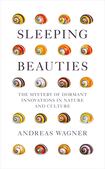
Evolution happens because genes randomly mutate and some of those genes convey a survival advantage for a living organism, and persist. This we know from Charles Darwin. What Darwin didn’t tell us, the author, a professor of evolutionary biology at the University of Zurich, tells us, is that it can take a long time, millions of years, before a mutation has its day, and becomes actually relevant to the survival of the organism.
These genetic ‘sleeping beauties’ only arise from their slumber, the author says, when ‘princes’ or factors in the world around us, wake them up.
For example, mammals began to appear when cold-blooded dinosaurs still ruled the Earth, but it was 100 million years before they flourished. The sleeping beauty was a gene that created warm-blooded creatures who could regulate their temperature better than dinosaurs.
That became important after a 10km wide meteorite – the prince – slammed into Mexico’s Yucatan Peninsula 66 million years ago. The dust and soot produced by the enormous impact accumulated in the atmosphere, causing average temperatures on Earth to drop by 5 degrees.
READ MORE
The age of the mammals had come, that of the dinosaurs at an end, as warm-blooded mammals were far better at keeping warm than dinosaurs.
It’s not just genetics where sleeping beauties apply, says the author, they are also to be readily applied to human innovation and the process of discovery.
For example, the wheel was invented many times, in many places, and, arguably only became ubiquitous after the arrival of cars and roads.
The process of chemically treating rubber so that it is stable and usable, was achieved by indigenous people long before the industrial age, but forgotten.
The age of rubber had truly arrived by the second World War when it became the most important US import, and a critical component used in tanks and jeeps.
The central theme is that useful genes, and ideas, crop up again and again in human history, but become relevant when the circumstances dictate.
Perhaps the book’s most important message is that the idea of a singular genius creating world-changing inventions out of nothing is a false one. The odds are overwhelming that someone, somewhere has already thought of the idea, and that it lay dormant until the world was ready for it.











